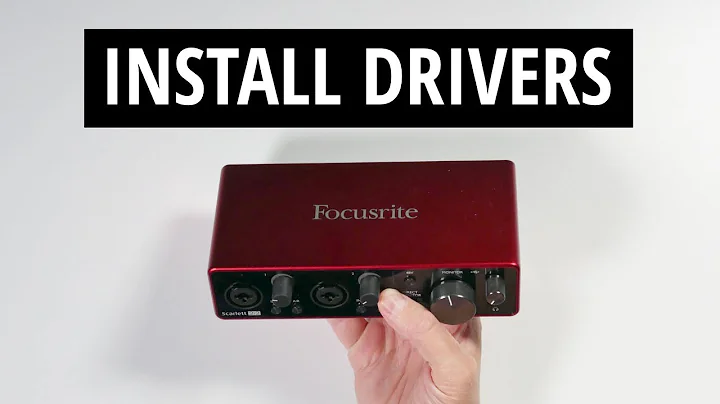Achieve Perfect Wheel Alignment and Safety | Expert Guide
Table of Contents
- Introduction
- Tools Needed for Wheel Truing
- Setting up the Wheel on a Stand
- Tightening the Spokes
- Checking the Runout
- Fixing Lateral Runout
- Checking Radial Runout
- Finishing and Torquing the Spokes
- Final Runout Check
- Using a Dial Gauge (Optional)
- Conclusion
How to Properly Tighten Spokes and True a Motorcycle Wheel
Introduction
Maintaining a properly trued wheel is essential for any motorcycle rider. Whether you ride on the street or off-road, ensuring that your wheel is correctly tightened and aligned can greatly enhance your riding experience and safety. In this article, we will guide you through the process of tightening spokes and truing a motorcycle wheel, step by step.
Tools Needed for Wheel Truing
Before we begin, it's important to gather the necessary tools for the job. Here are the tools you will need:
- Tusk Che Stand
- Tusk Spoke Wrench Set
- Tusk Spoke Torque Wrench
- Optional: Dial Gauge
These tools will assist you in properly tightening the spokes and truing the wheel. The dial gauge is optional but can provide additional precision, especially for street bike wheels.
Setting up the Wheel on a Stand
To begin the truing process, you need to set up the wheel on a truing stand. Follow these steps:
- Slide the axle through the wheel.
- Place the cone and cylinder spacers on the axle.
- Tighten the cone spacer set screw until the spacer sits firmly against the wheel bearing.
- Tighten the cylinder spacer against the edge to prevent horizontal shifting of the wheel.
Tightening the Spokes
With the wheel securely set up on the stand, it's time to start tightening the spokes. Here's how to do it:
- Begin at the valve stem hole and work your way around the circumference of the wheel, tightening each spoke a quarter turn.
- Continue this pattern until the nipples start to seat down into the rim.
- Ensure that you're tightening all the spokes evenly for easier truing.
Checking the Runout
After snugging all the spokes, it's important to check the runout of the wheel. Follow these steps:
- Spin the wheel and observe any lateral runout (side-to-side movement) and radial runout (up-and-down movement).
- Make adjustments to fix lateral runout by tightening or loosening the appropriate spokes on the opposite side.
- Repeat the process for any high or low spots to fix radial runout.
Fixing Lateral Runout
To fix lateral runout, follow these steps:
- Tighten all the spokes above a low spot to pull the rim away from the pointer and correct the runout.
- If there's a high spot, slightly loosen all the spokes above it to allow the rim to come down.
Continue these steps until the radial runout is less than 2 mm.
Checking Radial Runout
To check the radial runout, follow these steps:
- Position the pointer underneath the rim.
- Look for any high or low spots in the rim and adjust the spokes accordingly.
- Tighten all the spokes above a low spot and slightly loosen all the spokes above a high spot.
Repeat this process until the radial runout is within the desired limit.
Finishing and Torquing the Spokes
Once the runout is minimized, it's time to finish and torque the spokes. Here's how:
- Start at the valve stem hole and tighten every fourth spoke a quarter turn.
- Continue this pattern until all the spokes are tightened evenly and torqued to spec.
- Check the runout again to make any final adjustments if necessary.
Final Runout Check
After torquing the spokes, perform a final runout check by spinning the wheel. Make minor adjustments as needed to ensure the wheel runs true.
Using a Dial Gauge (Optional)
If you want to achieve even greater precision, you can use a dial gauge to measure the exact runout. While not necessary, this tool can help you fine-tune your wheel truing process.
Conclusion
By following these steps, you can properly tighten spokes and true a motorcycle wheel. Remember to take your time and ensure that all the spokes are tightened evenly for optimal results. If you have any further questions or need assistance, don't hesitate to reach out to us at Rocky Mountain ATV/MC.
🔧🏍️
Highlights
- Properly truing a motorcycle wheel improves riding experience and safety.
- Gather the necessary tools such as a Tusk Che Stand, Spoke Wrench Set, and Spoke Torque Wrench.
- Set up the wheel on a truing stand by sliding the axle, placing spacers, and securing them.
- Tighten the spokes evenly by starting at the valve stem hole and working around the wheel.
- Check the runout and make adjustments to fix lateral and radial runout.
- Torque the spokes to spec, ensuring even tightening and alignment.
- Use a dial gauge for precise measurements (optional).
FAQ
Q: Can I true a motorcycle wheel without a truing stand?\
A: Truing stands provide stability and accuracy, making the process much easier. However, it is possible to true a wheel by improvising a stand using a bike frame or other stable supports.
Q: How often should I check and true my motorcycle wheel?\
A: It is recommended to check the wheel's trueness and spoke tension during regular maintenance intervals or whenever you notice any issues such as wobbling or uneven tire wear.
Q: Do I need to replace the spokes when truing a wheel?\
A: If the spokes are damaged, rusty, or showing signs of wear, it's advisable to replace them. Truing a wheel with worn-out spokes may lead to inconsistent results and potential failure.
Q: Can I true a motorcycle wheel without a spoke torque wrench?\
A: While a spoke torque wrench ensures consistent tension, it is possible to true a wheel without one. However, be cautious not to overtighten the spokes, as this can cause damage.
Resources







